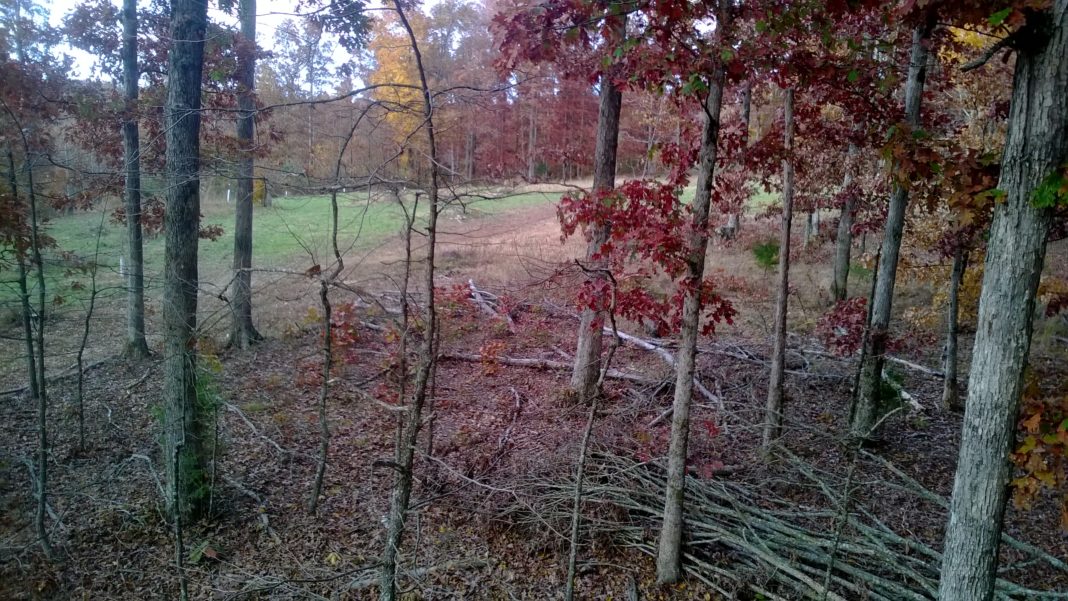Imagine planting a food plot that will outlive you.
That’s a tall assignment for clover, rape, or alfalfa, yet a tree food plot may do just that. Deer are natural browsers and planting trees that produce soft and hard mast is an excellent way to keep your herd well-fed throughout the seasons — and set a better table than your neighbor.
This post from Chestnut Hills Outdoors covers all the basics of growing and planting trees. Many states offer a financial incentive to plant trees for wildlife and to control erosion. Contact your local wildlife or soil conservation office for details.
Trees are like children – you get out of them what you put into them. Luckily, they require a lot less work than a teenager! But every tree needs water, fertilizer and a good environment to grow into a healthy, productive food plot tree that will feed wildlife on your land for many years. It all starts with site selection. Pick a location that has good air and soil drainage, preferably the top or side of a hill, and avoid frost pockets and areas prone to flooding.
Look at the trees growing naturally on the site. A fertile soil will produce large trees naturally. If there are large oaks or other trees growing on the site, it is indicative of good conditions. If a piece of land has been abused, over-farmed with the soil nutrition eroded away, or it will only support pines or scrubby growth, this will require more work to get good growth from your food plot trees.
First, you must determine what type of soil you have. Dig a hole and if possible get the soil tested. Sandy or clay loams are best – they are easy to dig and drain readily. If planting in clay, you’ll need to break up the ground that will eventually surround the hole you’ll place the tree in. This is to allow water to move freely around the clay so as to not create a bathtub-like environment. Soil pH levels are a factor in determining the future health of your tree. You’ll want a soil pH level between 5.0 and 7.0. Most soils in the eastern U.S. are within this range, but if higher than 7.0, you will need to use Sulfur based fertilizer such as Ammonium Sulfate to lower the pH.
To lay out your planting, mow the site and herbicide the spots you want to plant. Chestnut and oak trees should be planted 30-40′ apart, and fruit trees 15-20′. Plant along the edge of an existing annual food plot, a field, or if in a forest, in an area with sunlight above for the trees to grow towards. When planting, dig the hole slightly larger than the pot size or root ball. Un-pot the plant and if roots are wrapped up and curled, cut of some of the roots to encourage new root growth. Plant the tree at the same level it was grown in the pot. Water generously and work the soil between the roots and the hole ensure no air pockets exist around the roots.
Weeds are a big competitor for young trees for water and fertilizer. Wrap Weed Mats and a Grow Tube around the trunk to keep weeds down. Be very careful with herbicide such as Roundup that you do not get any on the tree as it can kill young trees right through the bark. Trees planted in the spring need to be watered between 2 to 3 times a week for the first 3 to 6 months. If planted in fall, just water it at planting and then once a week until they lose their leaves with the onset of winter.
Most food plots do not have access to irrigation systems, thus it is necessary to get water out to the trees. It is recommended to use Grow Tubes, which recycles moisture given off of the
leaves at night. Grow Tubes also protect young trees from deer browsing. Balanced fertilizer is important to tree growth of younger plants. Wait to fertilize with a time-release fertilizer until a month after the tree has leafed out as it could burn the roots of younger plants. The best times to fertilize are between March and April, and again in early June. Do not fertilize in the fall because it could harm the plant. Once you’ve fertilized your tree, water it lightly for absorption.
It is easy to be successful with growing Food Plot Trees. Give them some good care at planting, and water over the course of the first couple of summers, and you will have productive food plots for many years to come. Get in the dirt and start digging!
Tell us what you think in the comments section below.
Photo (top): Cumberland Land Company



















![The Best Deer Camp Chili [VIDEO] Deer Chili Ingredients, Tomatoes, Chili Spices](/wp-content/uploads/2015/10/Deer-Chili-Deer-Camp-Recipe-218x150.jpg)
![How to Call Elk Early in the Season [VIDEO]](/wp-content/uploads/2016/08/byers003-218x150.jpg)




![Idiots Disturb Hunter: How Would You Have Handled It? [VIDEO]](/wp-content/uploads/2015/10/DSC00110-e1474487693878-100x70.jpg)
![Albino Buck Shocked to Shed His Antlers [VIDEO]](/wp-content/uploads/2015/10/AlbinoDeer-100x70.jpg)